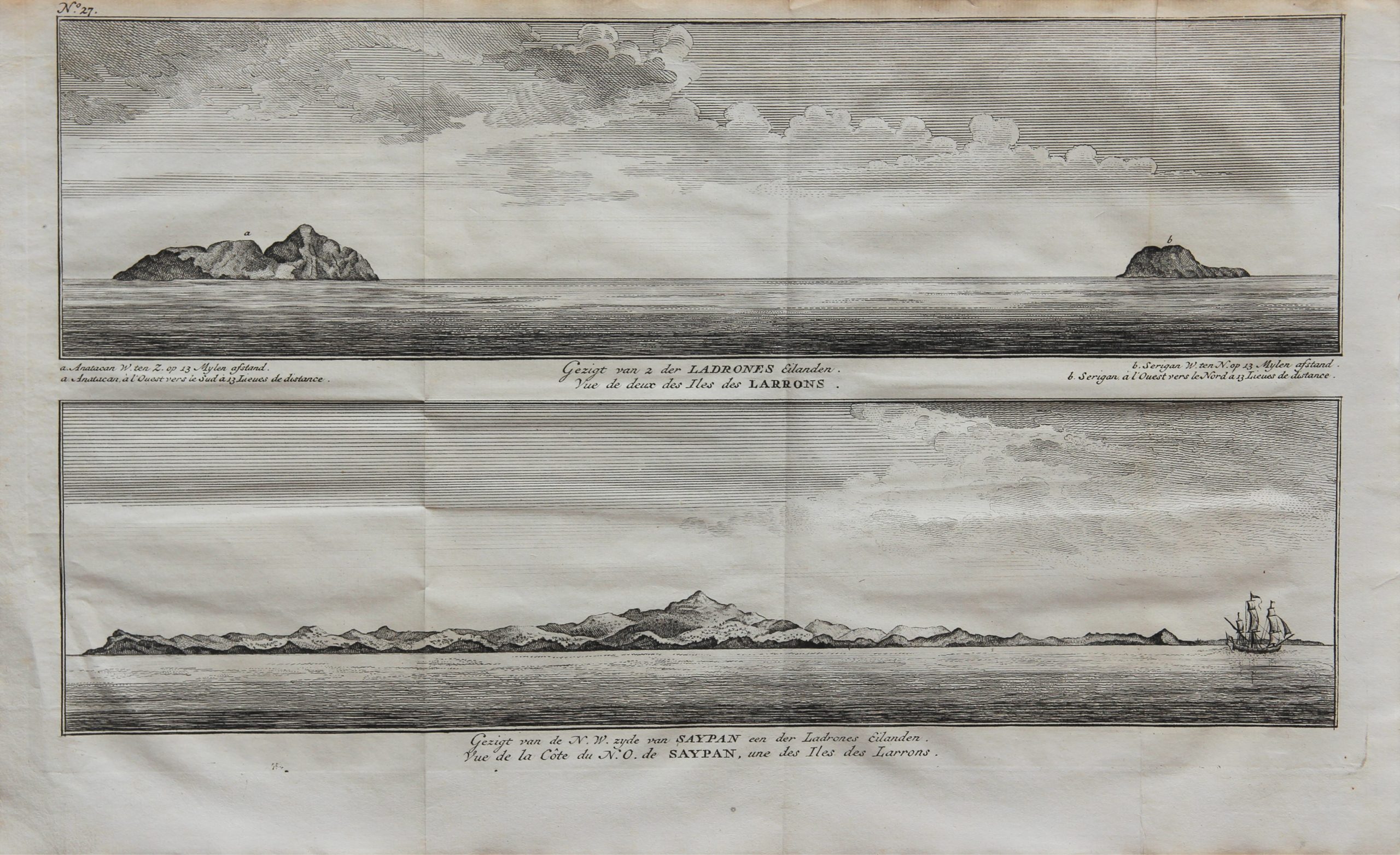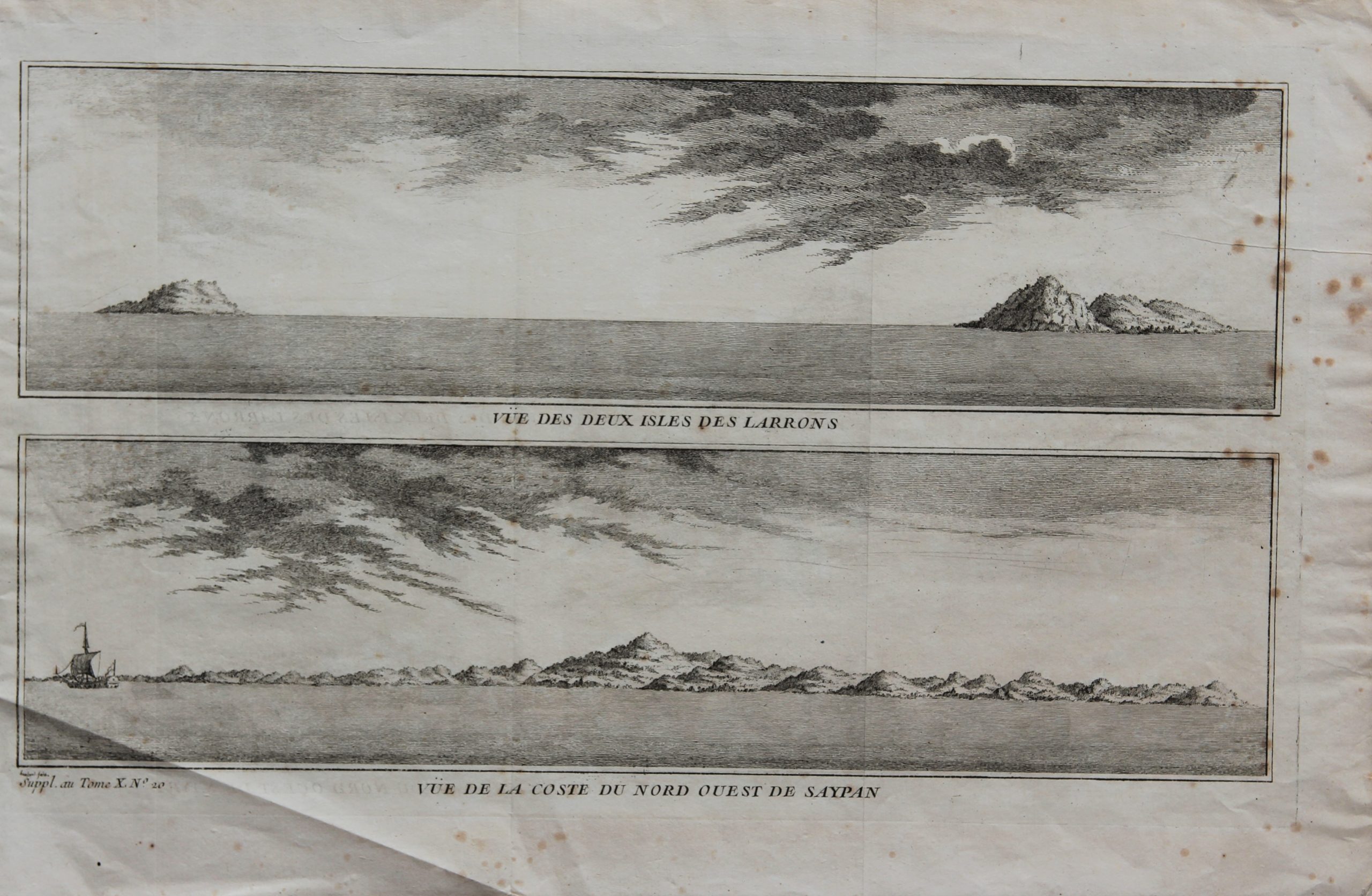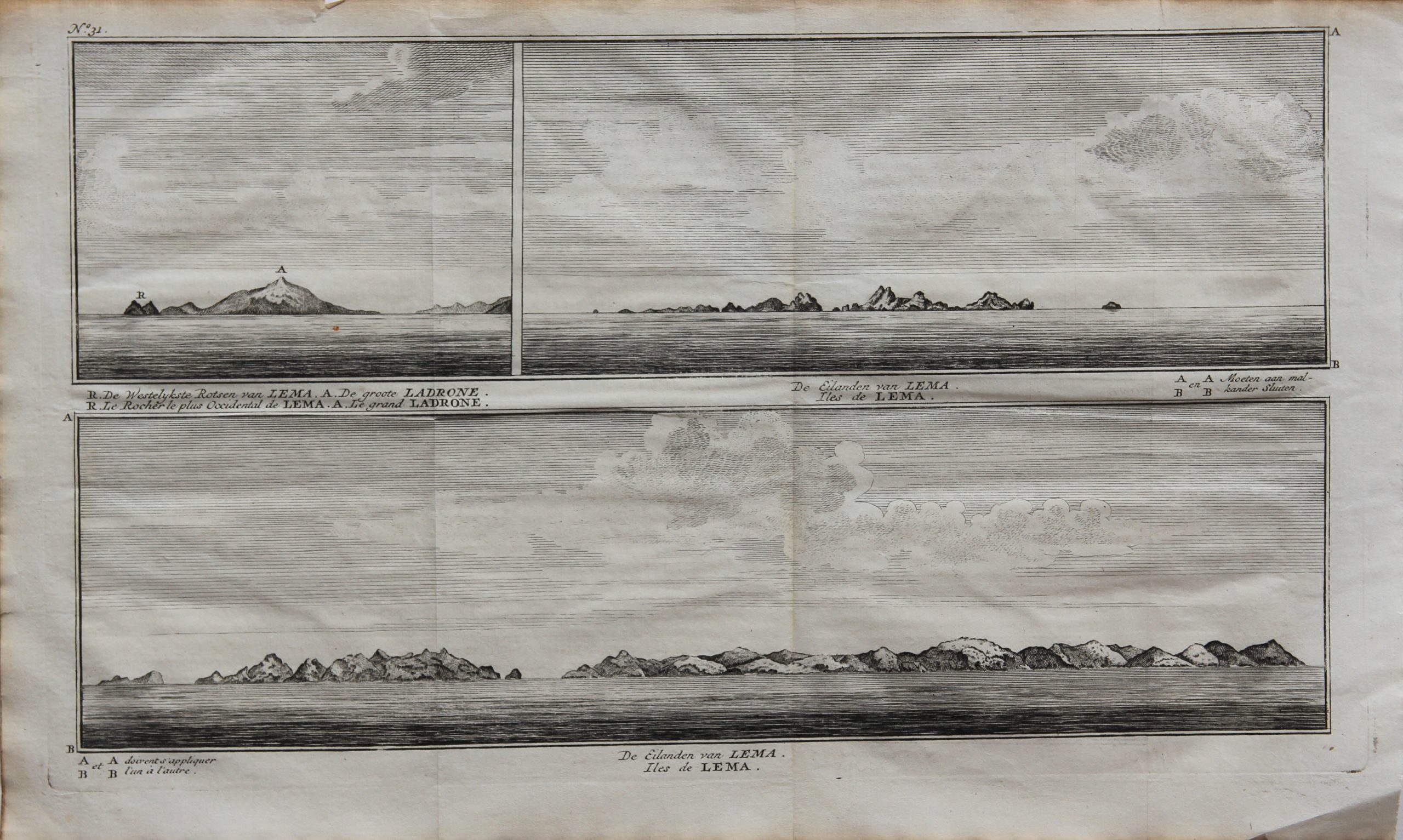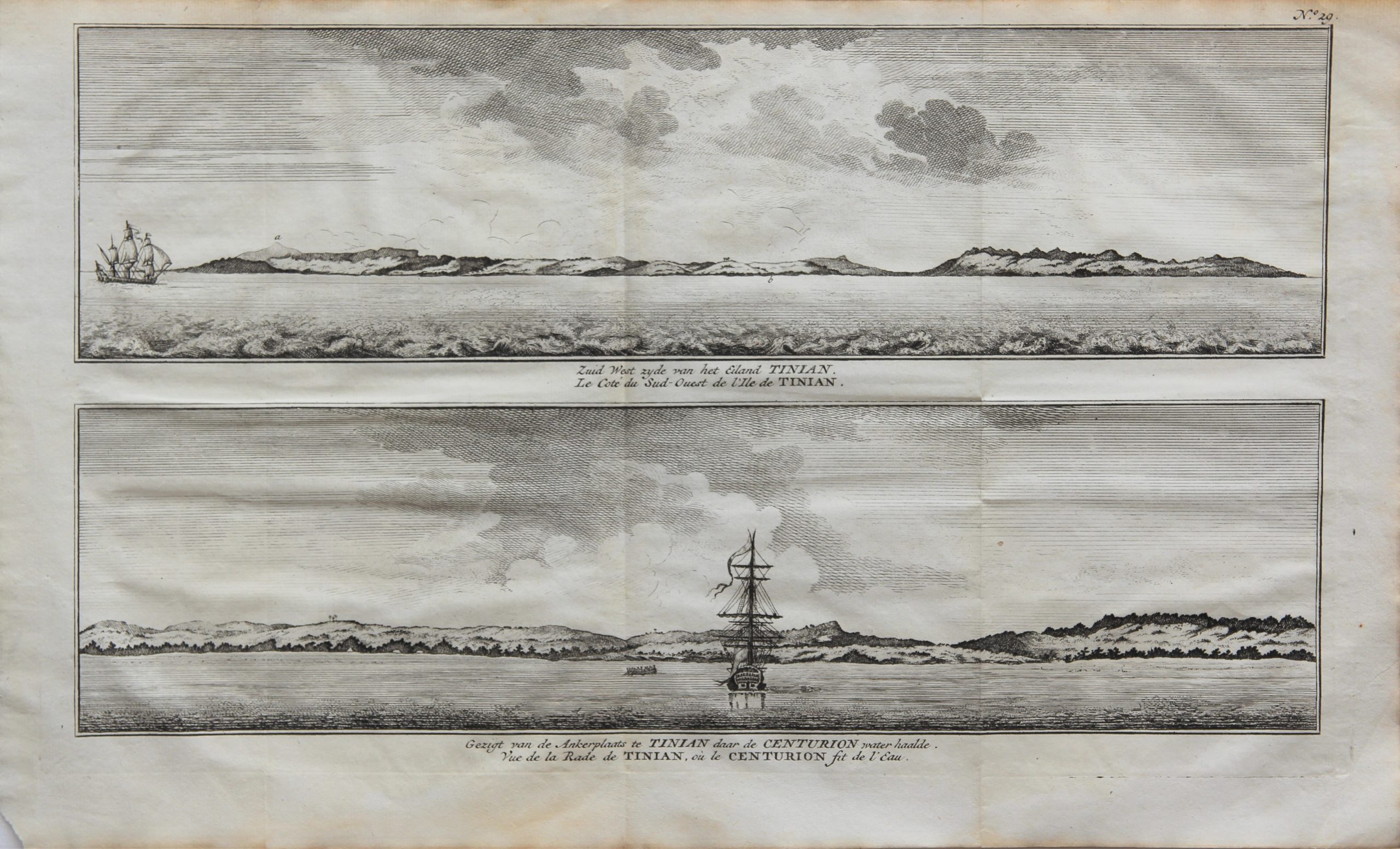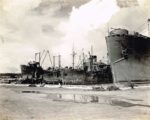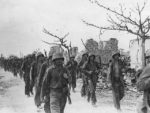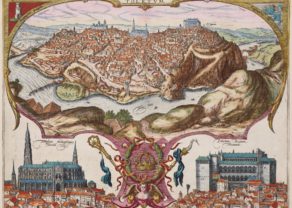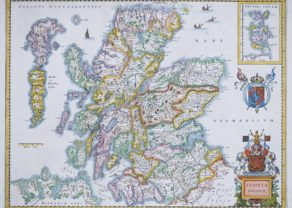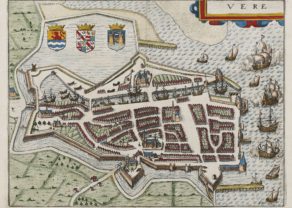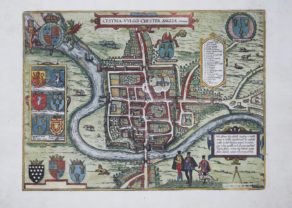Mariana Islands – Saipan and Tinian
On 4 sheets: before the storm…
Detail
Date of first edition: 1748
Date of this edition: 1748
Dimensions for each of the four views (including margins): 24 x 39,5 cm
Condition: very good. Sharp copper engraving printed on paper. Three vertical book folds are as published. Wide margins. Natural age-toning. One map has a 3 mm tear in upper margin, not affecting view.
Condition rating: A
Verso: blank
From: Reize Rondsom de Werreld by I. Tirion, Amsterdam
In stock
Spanish exploration and control
The first Europeans to explore the string of islands w<ere the Spanish under the world circumnavigation of Magellan in 1521. The indigenous population of these islands were the Chamorros, after their language. The Spanish called the islands the Isles of Thieves (referring to the Chamorros), meaning Islands of Thieves. Oh Irony!
George Anson
George Anson (1697 – 1762) was a British Royal Naval admiral serving as a junior officer during the War of Spanish Succession. With a squadron of six war ships he undertook a world circumnavigation in 1740. The fleet undertook several attacks on Spanish South America. Also, mutiny took place aboard the Wager in 1741 before the Chilean coast.
Tinian was sighted on 23 August 1742 but it took four days to find safe anchorage. Anson had a Spanish flag hoisted in the hope of gaining a better reception: the main island, Guam was Spanish held. Disease and starvation had taken their toll. For the starving crew, the landing at Tinian was their saving since the island was a lush tropical paradise with an abundance of fruit and other edible greens near the beach, but also fresh water and cattle. On 15 June 1744 the fleet reached home at Spithead.
WW II in the Pacific
The island chain saw significant fighting during World War II. Guam, a possession of the United States since 1898, was captured by the Japan in an attack from the Northeren Mariana Islands that began on the day of the Japanese attack on Pearl Harbor (December 8, 1941, the same time as the Pearl Harbor attack across the International Date Line).
These heavenly islands were submitted to a ferocious battle scene in WW II: 15 June 1944 – 9 July 1944. It ended in a “Waterloo” for the Japanese forces with over 58.000 casualties. . Later, the United States Army Air Force based on these islands conducted an intense bombing campaign against the Japanese cities of military and industrial importance, including Tokyo, Nagoya, Osaka, Kobe and others. Both the Enola Gay and the Bockcar (which dropped atomic bombs on Hiroshima and Nagasaki, respectively) flew their missions from Tinian’s North Field.
Today
The Northern Mariana Islands, officially the Commonwealth of the Northern Mariana Islands (CNMI) is an unincorporated territory and commonwealth of the United States consisting of 14 islands in the northwestern Pacific.
